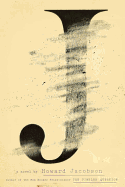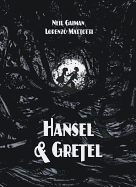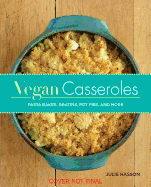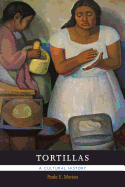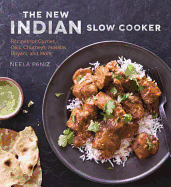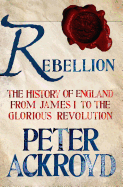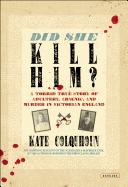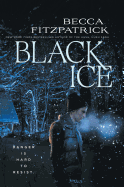Tuesday, October 28, 2014
If I were still a bookseller, I'd happily place the six books on my "reading now" shelf in your hands and say, "You've got to read these!" All are from relatively small publishers, adding to that intoxicating sense of discovery we know so well as readers:
Yasushi Inoue's The Hunting Gun, translated by Michael Emmerich (Pushkin Press), elegantly portrays the dangerous, irresistible complexity of illicit love (and its aftermath) in letters from three women--a lover, her daughter and the abandoned wife.
In Bridgett M. Davis's haunting novel Into the Go-Slow (Feminist Press at CUNY), Angie is nearly consumed by the irresistible flame that was her older sister's life and death years before. From Detroit to Lagos, Angie retraces her sister's footsteps to find her own path.
A search for the perhaps mythical lair of Chinese poet Han Shan is the subject of James P. Lenfestey's Seeking the Cave: A Pilgrimage to Cold Mountain (Milkweed). The ancient poet set the challenge himself: "Men ask the way to Cold Mountain/ Cold Mountain; there's no through trail."
"A memory so present that it resembles oblivion," Imma Monsó writes in A Man of His Word, translated by Maruxa Relaño & Martha Tennent (Hispabooks). In this beautifully conceived memoir about the sudden loss of her husband, she observes that "you write to discover what the next step will be."
While I confess that Expect Delays (Coffee House, Nov. 11) was my first encounter with Bill Berkson's poetry, I'm pleased my late discovery will now be rewarded by his many books: "I like to have a little secret at the end of my poems,/ The way nothing is ever finished."
J
by Howard Jacobson
Howard Jacobson, author of the Man Booker Prize-winning The Finkler Question, again caught the eye of the Man Booker selection committee, which this year shortlisted J, a dystopian novel that imagines a futuristic Britain radically altered by a cataclysmic event referred to cryptically as WHAT HAPPENED, IF IT HAPPENED.
The government and a willing populace have created a repressive society where the past is occluded, lineages are obscured and certain forms of music and art are shielded from memory. The novel follows Kevern Cohen and Ailinn Solomons as they try to form a relationship. Not only must they endure the dramas typical to any union of lovers but they've been robbed of the scaffolding of history; they lack the pop-culture touchstones to reference how those in love feel or behave. While it makes for a raw and touching courtship, their lives are further complicated by the Orwellian specter of local villagers watching their every move and reporting them to unseen overseers.
Jacobson gradually reveals WHAT HAPPENED, IF IT HAPPENED. The survivors are both vague about the situation (from fear) and somewhat ill-informed about the true order of events, so this fragmented and incomplete understanding of the facts adds a disorienting feel to J. Kevern and Ailinn are protagonists worth rooting for, and J delivers a gut punch of a plot twist that rests somewhere between hope and devastation. This is a major novel, a rare work that makes readers think as much as feel--and the feelings that it invokes are uneasy ones. --Donald Powell, freelance writer
Discover: A dystopian classic, shortlisted for the Man Booker Prize.
The Book of Strange New Things
by Michel Faber
In The Book of Strange New Things, Michel Faber (Under the Skin; The Crimson Petal and the White) continues to expand the cutting-edge of literature as he explores a marriage in crisis in a novel about evangelizing an alien world.
Peter Leigh is a missionary sent to Oasis, a recently discovered planet light years away. His wife, Bea, is left back on Earth, where the situation becomes increasingly desperate, possibly apocalyptic. Their solid, loving relationship is reduced to fumbling, intermittent communications through typewritten notes, as they try to share their diametrically opposed experiences: Peter reaches euphoric moments with his Jesus-loving alien brethren (who call the Bible the Book of Strange New Things), while Bea is increasingly desperate and isolated back home as the world suffers a series of unprecedented natural disasters. Faber manages to convey the emotional rawness and sense of how a few wrong words can send a relationship hurtling into dangerous realms.
The speculative aspects of Faber's novel are seamless, intriguing and ultimately shocking, and his descriptions of the planet have that touch of the odd and sublime (on Oasis, even the rain is different). The Oasans are a fully realized species, and why they are so keen, even desperate, to hear the "technique of Jesus" is one of the surprises Faber has in store. Faber manages to weave echoes of imperialism and "white man's burden" into the narrative without making Peter into a straw man of an overzealous evangelist.
The Book of Strange New Things is an unsettling, thought-provoking exploration of faith, love and redemption, deserving of a wide audience. --Donald Powell, freelance writer
Discover: Michel Faber moves to a new world in this thought-provoking and ultimately shocking speculative novel.
Leaving Time
by Jodi Picoult
The legions of readers who already adore the writing of Jodi Picoult (The Storyteller) have an (often exceeded) expectation of richly drawn characters, intricately woven plots and resonant conclusions. They have come to expect mastery, and will not be disappointed by Leaving Time. Picoult explores territory that is heretofore uncharted in her career, and to be thrown for a loop by an author whose bestselling work routinely follows a successful formula is a pleasure as unexpected as finding a vending machine has kicked out two chocolate bars instead of one.
Leaving Time centers on Jenna, a 13-year-old girl fixated on finding her mother, a scientist who abandoned her a decade before. She is aided by two unlikely allies: Serenity, a pink-haired psychic with something to prove, and Virgil, a crotchety detective whose mishandling of an old case drove him straight to the bottle. All three are connected by their shared pain and begin to bond in surprising ways as they hunt for Alice, Jenna's missing mother.
The otherwise-absent Alice gets a voice with first-person chapters covering the time before she left her daughter. These flashbacks provide fascinating insight into both her life with baby Jenna and as well as her obsession with elephants. There's nearly a book within a book about these majestic creatures that will leave readers almost as riveted by pachyderms as they are by this exceptional story of flawed souls and redemption.
To say more about this irresistible mystery would be doing readers a great disservice. The pleasure of discovery in this novel is a feeling that readers will not soon forget. --Natalie Papailiou, author of blog MILF: Mother I'd Like to Friend
Discover: A triumphant departure from Picoult's typical (outstanding) body of work.
Mystery & Thriller
Riders on the Storm
by Ed Gorman
In the Doors' great moody song "Riders on the Storm," we learn "there's a killer on the road." In Riders on the Storm, Ed Gorman's 10th Sam McCain mystery--all of which are inspired by song titles--there is indeed a killer on the loose. But who is he?
In the last book in the series (Bad Moon Rising), small-town lawyer Sam had been drafted into the Vietnam War. An accident prevented him from going to war, and after a stint in a military hospital he's now back in Black River Falls, Iowa. One of his very best friends, Will Cullen, who did go to Vietnam, is back and he's not doing well. Sam attends a political reception where Republican Senator Patrick O'Shay announces that a "true man and a true patriot," Steve Donovan, will be running in the local Iowa congressional election. Will, recently active in the anti-war movement, shows up and is brutally beaten into unconsciousness by Steve. Later, Steve is found dead by his car, wheels slashed, struck in the head by what appears to be a tire iron.
All fingers point to Will; he's found with the weapon. Sam must call on his legal knowledge and his sharp investigative skills to protect his friend, whom he believes is innocent. Gorman captures the time period perfectly--the politics, the emotions, even the sometimes snide attitudes toward women (Sam says only "a feed bag could hide" his secretary's body). With Sam--aloof, smart, cynical--Gorman cleverly transplants the classic elements of noir into the quiet cornfields of Iowa. --Tom Lavoie, former publisher
Discover: A murder investigation that's close to lawyer Sam McCain's heart, in post-Vietnam Iowa.
Food & Wine
Vegan Casseroles: Pasta Bakes, Gratins, Pot Pies, and More
by Julie Hasson
Just in time for fall comes Julie Hasson's ninth cookbook, Vegan Casseroles, filled with recipes that satisfy our hibernation-fueled need for rich, satisfying comfort food without the calories and cholesterol of traditional casseroles. Hasson (Vegan Pizza), who regularly contributes to Bon Appétit, Cooking Light, Vegetarian Times and FamilyFun, knew when she stopped eating animal products that "giving up shepherd's pie, eggplant parm, and cheesy rice casserole was not an option" so she tackled the challenge of creating healthy versions of her favorite dishes.
Hasson's vegan casseroles are easily assembled from whole, unprocessed foods without any trans fats or animal products. She encourages experimentation by including a selection of sauces to be paired with favorite veggies, pasta or grains; Hasson believes sauces are the key to great taste and texture since they bind all ingredients together. Beyond standards like macaroni and cheese, potpie and quiche, Hasson includes global favorites, such as enchiladas, stuffed cabbage rolls and kugels. She also provides a list of pantry staples--seasonings, thickeners, sweeteners, proteins, baking aids--with a brief description of each and recommended brands when appropriate (she is a fan of Bob's Red Mill in particular), as well as gluten-free alternatives.
The "more" of the subtitle includes appetizers (Loaded Nacho Fries, mushroom-and-caramelized-onion pate) and casserole-style desserts (a baked coconut pudding, cranberry-apple crisp, cinnamon-sugar cheesecake). Her ideas for casserole toppings, such as crushed rice cakes or toasted waffle crumbs, provide a new take on old favorites. Vegan Casseroles ably reinvents cozy, cherished classics, providing indulgent flavors without sacrificing health. --Kristen Galles from Book Club Classics
Discover: Healthy, compassionate comfort food without the guilt.
Tortillas: A Cultural History
by Paula E. Morton
There is a saying in Mexico: sin maíz, no hay país ("without corn, there is no country"). For many South Americans, corn tortillas represent the staff of life, just as wheat bread does for Europeans. These hand-patted disks of fresh maize trace their roots to ancient Mesoamerica, where the tortilla held important ceremonial functions in addition to providing sustenance. In Tortillas: A Cultural History, journalist and former farmer Paula E. Morton (Tabloid Valley) outlines the powerful forces that fueled the rise of this "life-giving" food from intimate-country-kitchen staple to large-scale, mass-produced global commodity with cross-cultural appeal.
Even as Spanish conquistadors threatened to displace fallow cornfields with cattle and wheat in the 1500s, it was not bread that the Spaniards used to appease their own hunger but the versatile and hardy tortilla (wrapped around meat and beans). As pioneers migrated westward on the Ox Bow Trail during the late 1800s, they turned away from costlier staples (eggs and butter) in favor of the inexpensive burrito. When mechanization and industrialization threatened to homogenize the tortilla in the late 20th century, mom-and-pop shops in local neighborhoods kept tortilla-making traditions alive.
Morton's slim book provides an illuminating look at the importance of the tortilla in bridging culture and history--a commodity that has never gone out of style despite the rocky political, economic, social and racial divides that have threatened its existence. "The tortilla," writes Morton, "crosses cultures, a consequence of the flow of people, ideas, technology and trade." For many, the tortilla is still the taste that connects them to the motherland. --Nancy Powell, freelance writer and technical consultant
Discover: A highly readable, fascinating history of one of the world's most consumed staples.
The New Indian Slow Cooker: Recipes for Curries, Dals, Chutneys, Masalas, Biryani, and More
by Neela Paniz
For many Western cooks, the complex, layered flavors of traditional Indian cuisine are appealing but intimidating. The diverse spices and aromatics, the preparation of ingredients and the time required for long, slow simmering can make a variety of Indian dishes seem out of reach on a busy weeknight. In The New Indian Slow Cooker, chef and restaurateur Neela Paniz (The Bombay Cafe) presents a solution to these problems: a mouthwatering array of Indian recipes simplified for the slow cooker, without sacrificing flavor.
Paniz begins with a primer on Indian ingredients and side dishes, listing essential spices and providing instructions for basmati rice, flatbreads and yogurt. She moves on to a dazzling array of soups, chutneys, meat curries and vegetarian mains, ending with a series of rice dishes. Throughout the cookbook, she includes brief explanations of the dishes' cultural context and traditional preparations, as well as anecdotes from her years in India.
Since much of Indian cuisine is built on elaborate preparation, some recipes require a bit of prep work before cooks can walk away from the slow cooker. Paniz takes her readers through these initial steps, providing ample hints and helpful tips. While many recipes showcase traditional flavors (sweet tomato chutney, chicken tikka masala, pork vindaloo), several others make use of innovative, nontraditional flavor blends, such as a pumpkin dish made with fennel-tamarind chutney.
Fully illustrated with delectable full-color photographs, The New Indian Slow Cooker provides a no-fuss way to experience the best of Indian cuisine--with fewer dishes to wash after dinner. --Katie Noah Gibson, blogger at Cakes, Tea and Dreams
Discover: A mouthwatering collection of traditional and innovative Indian recipes, adapted for the slow cooker by chef Neela Paniz.
Simple Recipes for Joy: More Than 200 Delicious Vegan Recipes
by Sharon Gannon
In her foreword to Sharon Gannon's Simple Recipes for Joy, Kris Carr promises the book "has the power to change your life; it may even save it." Gannon and Carr assert that food is the most powerful medicine--one that can transform our lives by changing our DNA--and believe the standard American diet's reliance on animal products high in acidity, saturated fat, cholesterol and carcinogens causes inflammation and oxidative stress, leading to a host of diseases. Gannon has been nourishing joy in her clients and readers through art, yoga and cooking since she opened her first restaurant in Seattle in 1971; in her view, veganism is easier on the planet as well as our bodies.
Gannon includes veganism FAQs, covering queries about nutrients such as protein and iron as well as sample menus and cleansing diets. The true bounty in this cookbook is the food itself: 50 pages of soups (creamy, broth-based, raw) like Pea Pod-Noodle Soup, Curry-Tahini-Shoyu Noodle Soup, Tortilla Bean Soup, and Sweet Potato and Corn Bisque; surprising salads like Flower Salad (with edible nasturtium and bergamot flowers) and Popcorn Salad, in addition to salads featuring seaweed, beets and rice. Beyond the soups and salads, Gannon provides recipes that highlight grains, vegetables, beans, tempeh, tofu and seitan, as well as sandwiches like a vegan BLT, a grilled-vegetable panino and Avo Bravo Burritos. Desserts include vanilla chia-seed pudding and Hippie Carrot Cake, in addition to cookies, cakes, pies and frozen treats like smoothies. Newcomers to veganism will not feel deprived! --Kristen Galles from Book Club Classics
Discover: How the alchemical aspects of cooking--transforming ingredients with water, fire and air--can satisfy body and soul.
History
Rebellion: The History of England from James I to the Glorious Revolution
by Peter Ackroyd
In Rebellion, Peter Ackroyd reaches the halfway point of his proposed six-volume History of England (begun in Foundation and continued in Tudors). Now, Ackroyd covers the period between the accession of James VI of Scotland, crowned as James I of England in 1603, and the Glorious Revolution of 1688.
Dazzled by the relative wealth of England compared to his native Scotland, James I spent far more than his treasury took in. When he incurred the wrath of Parliament as a result, he refused to justify the royal expenditures, instead relying on the Duke of Buckingham to shield him from "mere" politics. His younger son, Charles I, continued both his father's spendthrift habits and acrimony with Parliament, refusing to accept the king's subjection to English common law--a fight that ultimately cost Charles his head and plunged the country into civil war, resulting in the rise of Oliver Cromwell and an interregnum government that wielded absolute military authority. Cromwell's death saw the return of the monarchy in Charles II and his brother James II, the latter of whom found himself banished in a "Glorious" (bloodless) rebellion three years after his coronation.
In the same vein as the previous two volumes, Rebellion does more than lay out the facts of history. Spliced between the chapters that move the chronological history forward are vignettes on daily life in 17th-century England, covering the theatres, literature, politics and economics, and the emerging popular press, as well as contemporary analysis of historical events. This is a fascinating look at life in England during tumultuous times. --Dani Alexis Ryskamp, blogger at The Book Cricket
Discover: A detailed look into the lives of 17th-century England's rulers and their battles with Parliament.
Did She Kill Him?: A Torrid True Story of Adultery, Arsenic, and Murder in Victorian England
by Kate Colquhoun
In 1889, 27-year-old Florence Maybrick was tried in a Liverpool court for the murder of her husband, James. The press and public were enthralled by the so-called "Maybrick Mystery," which had all the elements of a scandalous sensation: a young American heiress, a wealthy cotton merchant, arsenic poisoning and intimations of the pretty young Mrs. Maybrick's infidelity.
Florence married James when she was 17 and he was 41. While the match made both families happy, the relationship soon soured. In debt from James's business failures, plagued by his refusal to set aside his mistress and surrounded by gossiping servants whom she could not control, Florence had taken to lamenting her situation in lengthy letters to her mother and to a business acquaintance of her husband: a handsome young bachelor named Alfred Brierley. She had also begun soaking arsenic-infused flypapers in a basin in her boudoir, ostensibly to make a face wash. Meanwhile, James, a noted hypochondriac, had added several new physicians to his regular rotation, each of whom diagnosed him with a different disease and prescribed different medications--including concoctions whose ingredients might combine in dangerous ways.
With meticulous research and eye for detail, Kate Colquhoun (Murder in the First-Class Carriage) spins out this mystery bit by bit, hinting at each potential explanation with equal sympathy and equanimity. The result is a delightfully suspenseful true-crime story that maintains its momentum beyond the trial verdict, leaving readers with a thorough grasp of the facts but, deliciously, no definitive answer to the title's posed question. --Dani Alexis Ryskamp, blogger at The Book Cricket
Discover: A suspenseful retelling of one of Victorian England's famous "true crime" cases.
Children's & Young Adult
Hansel & Gretel
by Neil Gaiman, illus. by Lorenzo Mattotti
Newbery Medal–winner Neil Gaiman (The Graveyard Book) retells Hansel and Gretel as a story of parents plotting a murder by neglect, with full-spread India ink compositions by Lorenzo Mattotti as dark and terrifying as his forest setting.
Gaiman reaches back to the tale's Grimm roots, at a time when Germany was besieged by war and food was scarce. After hunger pangs wake Hansel in the night, he hears his mother suggest to his woodcutter father that he take their children deep into the forest and "lose them." With four mouths to feed, she suggests, "we'll all die. Without the extra mouths, you and I will have a chance." Mattotti's swirling black brushstrokes leave licks of white flames where the children's father has built a fire for them in the forest, in the upper left corner of one illustration, and readers can just make out the father's axe, eye and hand in the lower right-hand corner as he leaves them to their fate. The artist creates each wordless double-page scene as menacing unexplored territory revealed to readers alongside the two siblings, from their discovery of the old woman's gingerbread house, to the suggestion of Hansel's cage, to the oven swallowing their captor like a hungry mouth.
Gaiman's text is a study in minimalism ("The old woman is dead," Gretel tells her brother, "I killed her"), yet he includes every salient detail--the father's reluctance to lose his children, the siblings' resourcefulness and bravery in breaking free, and the happy reunion when they return. A perfectly frightful treat. --Jennifer M. Brown, children's editor, Shelf Awareness
Discover: Newbery medalist Neil Gaiman's haunting take on Hansel and Gretel, with a frightfully imagined forested world by Lorenzo Mattotti.
Black Ice
by Becca Fitzpatrick
Becca Fitzpatrick (the Hush, Hush saga) here pens an adventurous stand-alone romantic thriller.
Seventeen-year-old Britt spent months training for a spring break hiking adventure in the Teton Mountains of Wyoming. "Anyone could camp. Backpacking required skill and moxie." She's struggling to move on from the callous breakup with her first boyfriend, Calvin. The trip was supposed to be cathartic and healing--until Calvin is appointed chaperone. Her adventure turns dangerous when a blizzard strands her car. She finds a cabin occupied by two mysterious men, Shaun and Mason. They're stranded, too, and fugitives who desperately need to get off the mountain. Britt's knowledge of the area could be their salvation, so they take her hostage.
Each of the men treats Britt very differently. Shaun is volatile and physically abusive. Mason has a mysterious kindness, which she doesn't know how to interpret, and finds increasingly alluring. "I've seen the way you look at me, Britt... I'm not the same as Shaun but I'm not good." As they hike down the mountain, Britt holds out hope that Calvin will come to her rescue. But soon she doesn't know whom to trust when she stumbles upon evidence of a series of murders. Britt has a tormenter and a protector, but can she figure out which is which, and who might be guilty of murder?
Set against the stark Wyoming mountains, Fitzpatrick's engrossing novel doubles as a coming-of-age story whose twisted plot will keep readers guessing until the end. --Jessica Bushore, former public librarian and freelance writer
Discover: A spring break hiking adventure turns dangerous--and possibly deadly--when two desperate criminals kidnap a teenage girl.


